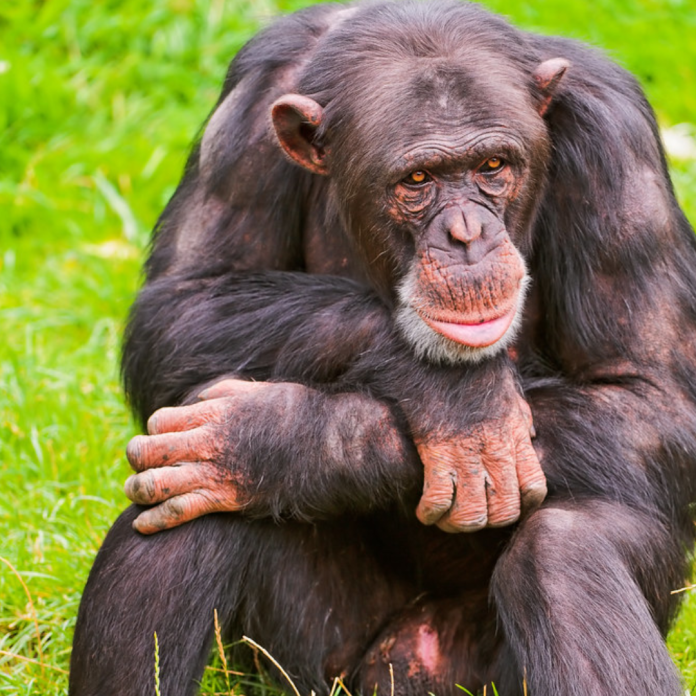Chimpanzees, our closest living relatives, share over 98% of our DNA. Unfortunately, they are endangered, with fewer than 250,000 remaining, and their population is declining annually by 1.5% to 6%. Habitat loss, hunting, and infectious diseases are among the major threats contributing to their decline.
Understanding how chimpanzees have adapted to their environments can provide valuable insights into human biology and evolution, and help inform conservation efforts. However, due to the difficulty of obtaining high-quality DNA samples from wild chimpanzees, we know very little about their genetic adaptation.
To address this gap, we collected fecal samples from hundreds of wild chimpanzees across 17 African countries as part of the Pan African Programme: The Cultured Chimpanzee. This international collaboration, involving geneticists, primatologists, and ecologists, aimed to analyze the genetic adaptations of chimpanzees in the wild.
Obtaining sufficient, high-quality DNA from fecal samples is challenging, and this study represents the first time such an effort has been undertaken at this scale. Through the use of advanced techniques, we were able to overcome these challenges and analyze the genetic data of 828 chimpanzees from 52 locations, covering all four subspecies.
Our findings indicate that different chimpanzee populations have evolved genetic differences that help them adapt to their specific environments. For example, forest-dwelling populations showed genetic adaptations in genes linked to resistance to infectious diseases, including the same genes involved in malaria resistance in humans.
These findings are not only important for chimpanzee conservation but also provide new insights into human evolution and disease resistance. This research also highlights how non-invasive fecal samples can be used to study local adaptation, opening doors for future studies of other endangered species.
Chimpanzees inhabit a vast area of 2.6 million km² across West, Central, and East Africa, with habitats ranging from dense forests to open woodland-savannas. Forests, which experience high rainfall and stable temperatures year-round, are rich in disease-causing microorganisms, while woodland-savannas have more seasonal climates, with dry periods marked by high temperatures and scarce resources.
Chimpanzees have developed behavioral adaptations to cope with these different environments. Some populations in woodland-savannas seek shelter in caves, bathe in water, and are more active at night to avoid overheating. Until this study, it was unclear whether genetic changes also played a role in their adaptation to these habitats.
Traditionally, collecting DNA from wild chimpanzees has been difficult because methods like darting or trapping are too disruptive. As a result, researchers have turned to non-invasive methods, such as feces. Fecal DNA is often degraded and contaminated with DNA from bacteria and food, making it difficult to extract usable genetic data. However, recent technological advancements have made it possible to obtain high-quality DNA from fecal samples.
In our study, we identified genetic variants that are more common in certain populations, suggesting that these variants help individuals survive in specific habitats. In forest habitats, we found strong evidence of genetic adaptation to infectious diseases, likely due to the higher prevalence of diseases in these environments. This mirrors patterns of genetic adaptation in human populations living in similar conditions.
One particularly intriguing finding was the identification of genetic adaptations in chimpanzees related to malaria resistance. Two genes, GYPA and HBB, which are involved in malaria resistance in humans, also showed signs of adaptation in chimpanzees. These findings suggest that both species may have independently evolved similar genetic adaptations to combat the same parasite, Plasmodium falciparum, which causes most human malaria deaths.
This research has important implications for chimpanzee conservation, as it suggests that malaria may have played a significant role in shaping the genetic makeup of forest-dwelling chimpanzees. It also highlights that different chimpanzee populations are genetically distinct and not interchangeable, meaning that ecological shifts, such as those caused by climate change, could affect populations differently.
Future research will be needed to confirm whether the genetic variants we identified truly provide protection against malaria and whether they are adaptive in the specific environments where they are most common. Further study of woodland-savanna populations could provide additional insights into how chimpanzees have adapted to these habitats, offering valuable clues about the evolutionary history of human ancestors who transitioned from forest to savanna environments.
Our work is part of an ongoing international effort to deepen our understanding of chimpanzee evolution and conservation, in collaboration with projects like the Pan African Programme: The Cultured Chimpanzee and the Chimp&See community-science project.


